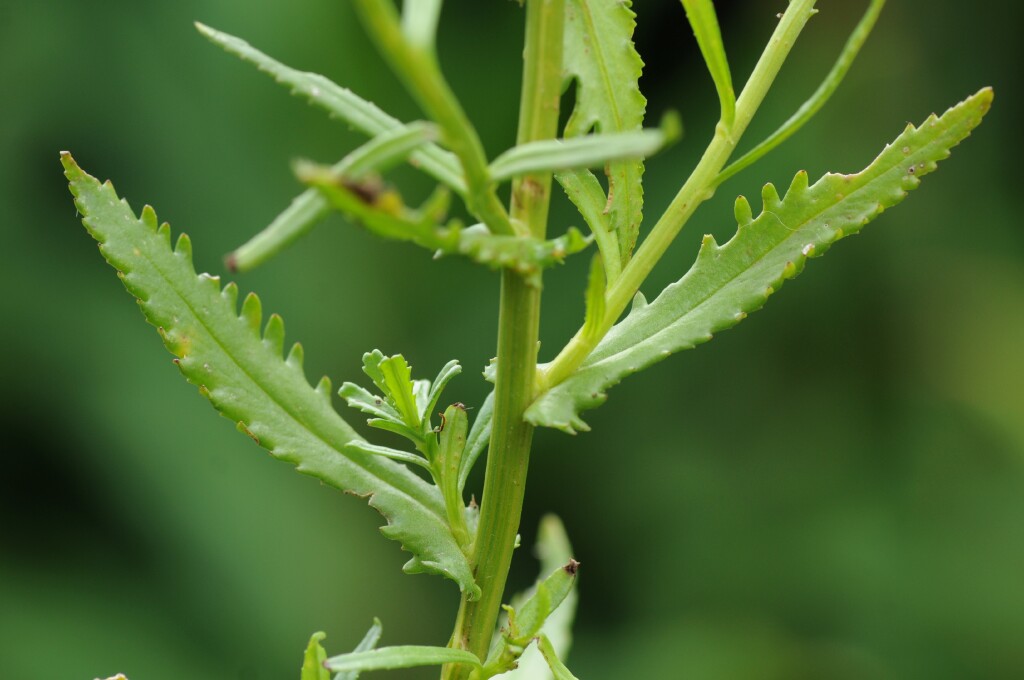Senecio pinnatifolius var. lanceolatus
(Benth.) I.Thomps.Erect or sometimes sprawling herb to 1.5(–2) m high, with tap-root poorly developed. Mid-stem leaves mostly lanceolate to oblanceolate (rarely oblong-elliptic or broadly ovate or obovate), 3–15 cm long, undivided to bipinnatisect, thin to subfleshy, or succulent on coast. Peduncles glabrous or with long hairs; involucre 4.0–7.0 mm long; bracts mostly c. 13, with apex purple; stereome slightly fleshy, succulent in coastal plants, delimited by a well-developed purple line towards the apex in inner bracts that have both lateral margins overlapped by outer bracts; bracteoles 6–14, ovate to narrow-ovate, 2.0–3.5 mm long, 0.8–1.6 mm wide, with margin often coarse-hairy. Cypselas (1.6–)2.0–3.2 mm long; hairs of cypselas of ray florets exceeding pappus-ring or not. Flowers Aug.–Mar.
GleP, Brid, VVP, VRiv, GipP, OtP, WaP, Gold, CVU, GGr, EGL, EGU, WPro, HSF, HNF, OtR, Strz, MonT, VAlp. Also SA, NSW, Tas. Widespread in forest, woodlands, shrubland, as well as edges of lakes or dry lake beds throughout the south of the state extending north to the Grampians and the alps.
The involucral bract morphology of this variety of Senecio pinnatifolius allows it to be distinguished from other varieties. The outer involucral bracts have markedly narrower hyaline margins than the inner bracts. The inner involucral bracts have the stereome bordered by a purple line in the apical quarter which creates a distinctive chevron (often just discernible with the naked eye). Some bracts are bordered by a purple line along the apical quarter on one side only and represent an intermediate condition between outer and inner bracts. The purple coloration is confined to the apex in the outer bracts and does not form a border. Leaf dissection is highly variable. The commonest form has lanceolate leaves with regularly serrate margins. However, dissection may vary from deeply bipinnatisect to quite entire (particularly along coasts). There is also variation in capitulum and cypsela morphology with a form with relatively small capitula occurring in south-west Victoria and a form with glabrous or sparsely hairy cypselas occurring on lake shores in the south-west and in higher rainfall areas east of Melbourne (Thompson 2005).
 Spinning
SpinningThompson, I.R. (2005). Taxonomic studies of Australian Senecio (Asteraceae) 5. The S. pinnatifolius/S. lautus complex.. Muelleria 21: 23–76.



